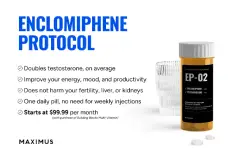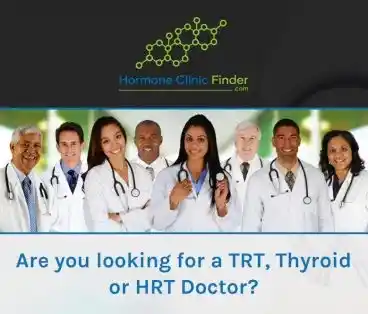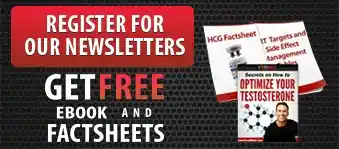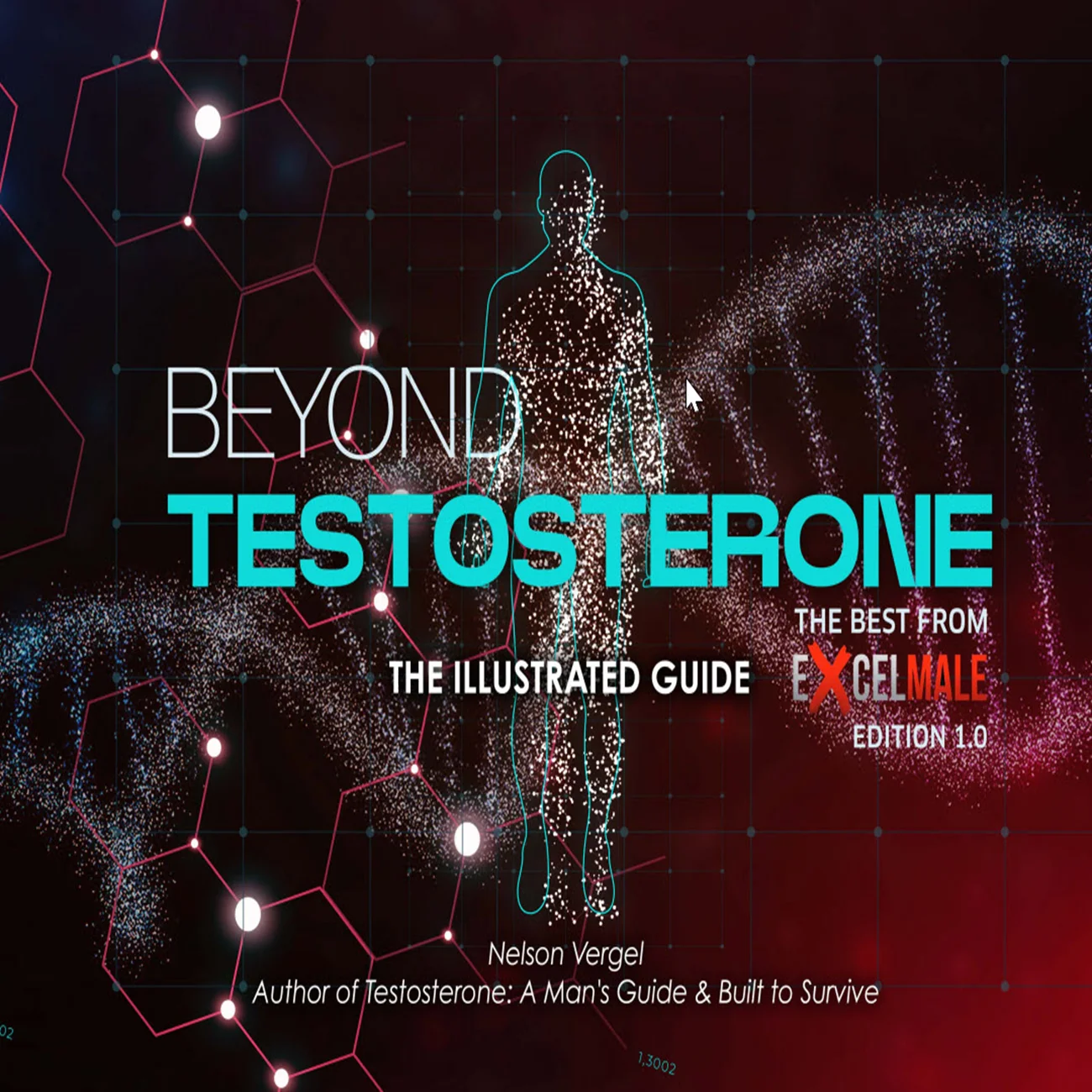madman
Super Moderator
* The response to AIs is variable, and their long-term safety in men remains uncertain. In addition, the use of AIs is off-label and lacks robust clinical evidence. Well-designed trials are needed to determine whether AIs are truly a viable harm reduction strategy and eventually reduce the incidence of self- initiated TTh. Until then, a cautious, individualized approach is essential—yet in selected cases, AIs may offer a supervised alternative that prevents progression to unregulated testosterone use.
* Among available alternatives, AIs offer several advantages. Their long half-life—especially for anastrozole and letrozole—permits infrequent dosing which may improve adherence. AIs preserve function of the HPG axis, and testosterone concentrations typically return to baseline after discontinuation, making them a reversible option. In contrast, hCG is a relatively expensive injectable that suppresses hypothalamic and pituitary activity, and may cause irreversible HPG axis disruption with long-term use. Compared to SERMs, AIs have a slightly better side effect profile, as tamoxifen and clomiphene have been linked to rare cases of retinal toxicity, vision issues, and pulmonary embolism (Salomão et al., 2007; Sharma, 2019; Solipuram, 2021). Several studies have nonetheless underlined the overall good safety profile of clomiphene citrate in men (Kraztek, 2020; Huijben, 2023). Furthermore, AIs allow estradiol to be monitored and doses titrated accordingly (Rasmussen, 2025)—unlike with SERMs, where estradiol levels are clinically irrelevant.
* The effectiveness of AIs in relieving hypogonadal symptoms remains uncertain. While AIs reliably raise testosterone levels by 50–100 % in men with low or low-normal baseline values, symptom improvement—fatigue, libido, erectile function, well-being—varies considerably (Leder, 2004; Burnett-Bowie, 2009). Some patients benefit while others report no change, suggesting factors beyond testosterone—psychological, lifestyle, metabolic, or placebo—play a key role.
* A key limitation of prolonged AI use is its effect on estradiol. In the short term, excessive suppression can cause reversible issues, such as reduced libido, even with elevated testosterone (Finkelstein et al., 2020), and mood changes and joint pain are occasionally reported as side effects. These symptoms typically resolve after stopping therapy. Long-term suppression of estradiol, however, may reduce bone mineral density and increase fracture risk (De Ronde, 2009).
* AIs may offer a supervised, temporary alternative by boosting endogenous testosterone while preserving HPG axis integrity. AIs may also serve as diagnostic and educational tools to evaluate whether symptoms are truly androgen-driven. Nevertheless, clinical response to AIs is variable, and long-term safety in men remains unknown. Their use is off-label and supported mainly by theoretical rationale and limited evidence. Robust randomized trials are needed to assess efficacy, safety, and long-term viability.
SUMMARY
Men with low-normal testosterone often present with symptoms such as low energy, reduced libido, and mood disturbances. However, guidelines restrict testosterone therapy (TTh) to men with confirmed hypogonadism, leaving this subgroup without clear treatment options. Frustrated, some turn to illicit testosterone, often at supraphysiological doses, risking long-term endocrine disruption, infertility, and cardiovascular disease. This perspective explores aromatase inhibitors (AIs) as a harm reduction strategy for such men. By inhibiting estrogen-mediated feedback, AIs stimulate endogenous testosterone production while preserving hypothalamic- pituitary-gonadal (HPG) axis integrity. In addition to potential symptom relief, AIs can be used diagnostically to assess HPG responsiveness and the relationship between testosterone levels and symptoms. They may also serve an educational role, helping patients better understand the hormonal contribution to their complaints and avoid premature self-treatment. The response to AIs is variable, and their long-term safety in men remains uncertain. In addition, the use of AIs is off-label and lacks robust clinical evidence. Well-designed trials are needed to determine whether AIs are truly a viable harm reduction strategy and eventually reduce the incidence of self- initiated TTh. Until then, a cautious, individualized approach is essential—yet in selected cases, AIs may offer a supervised alternative that prevents progression to unregulated testosterone use.
3. The advent of self-initiated testosterone therapy
Some patients, however, remain convinced their symptoms are testosterone-related, even when alternative causes such as psychological or functional factors have been explored. If dissatisfied, they may turn to physicians more willing to prescribe TTh without clear indications or to online sources promoting testosterone for low-normal or even clearly normal levels (Underwood, 2021). These often recommend supraphysiological doses to boost performance, energy, and libido. As illicit testosterone is easily accessible, whether online, via gyms, or through local dealers, some men self-administer it, particularly for sexual issues like low libido or erectile dysfunction. Since high-dose testosterone can temporarily enhance energy, mood, and libido—even in initially asymptomatic men (Smit et al., 2021)—they may falsely attribute their symptoms to low testosterone and continue unsupervised TTh indefinitely.
While non-prescribed androgen use is common among strength athletes (McVeigh, 2017), testosterone is also increasingly self-administered by men seeking to treat non-specific symptoms such as sexual dysfunction, fatigue, or obesity—despite a lack of clinical indication (Handelsman, 2021). User profiles therefore widely differ in motivation, expectations, and risk. Younger men in fitness communities often seek muscularity and performance, while older men focus on vitality, libido, or mental well-being. The latter are often exposed to “anti-aging” messages from online platforms or clinics promoting testosterone as a remedy for age-related symptoms. Most users of non-prescribed androgens, regardless of their motivation, are unaware of the potential long-term consequences, including effects on cardiac function, cardiovascular health, or endocrine function (Bond, 2022; Goldman, 2018).
Because of these risks, particularly in the absence of a valid medical indication, unregulated testosterone use poses a significant threat to health. As such, TTh almost invariably suppresses endogenous testosterone production and spermatogenesis, and long-term use may cause irreversible HPG axis disruption, leading to infertility and lifelong dependence on exogenous testosterone (WHO, 1990; Kanayama, 2015; van Os, 2025). In addition, growing evidence links high-dose TTh to cardiovascular issues—dyslipidemia, hypertension, and endothelial dysfunction—increasing the risk of coronary artery disease and stroke (Bond, 2022; Windfeld-Mathiasen, 2025). Even when prescribed, medical testosterone therapy carries some of these risks, such as erythrocytosis and dyslipidemia (Bhasin, 2018). An overview of the key adverse effects associated with non-prescribed androgen use is shown in Fig. 1 (Bond, 2022). Given the potential consequences, clinicians should identify individuals at-risk of commencing non-prescribed TTh, and offer supervised alternatives to prevent unregulated testosterone use.
Fig. 1. An overview of side effects that can be caused by non-prescribed androgen use. Adapted from Bond et al. (2022). ∗ specific to men, † specific to women.

5. Treatment options for low-normal testosterone
A growing body of evidence explores alternatives to TTh for men with low or low-normal testosterone (Raheem, 2021). Notable options include aromatase inhibitors (AIs) such as anastrozole and exemestane; selective estrogen receptor modulators (SERMs) like clomiphene citrate and tamoxifen; and human chorionic gonadotropin (hCG). AIs and SERMs reduce estradiol synthesis or block its receptor, respectively, inhibiting negative feedback on the hypothalamus and pituitary, and stimulating gonadotropin and testosterone production. HCG, an LH analogue, directly stimulates Leydig cells in the testes. All have been shown to raise testosterone levels and, though evidence varies, may also relieve hypogonadal symptoms (Kraztek, 2020; Huijben, 2023; Henriksen, 2024; Rasmussen, 2025)..
Among available alternatives, AIs offer several advantages. Their long half-life—especially for anastrozole and letrozole—permits infrequent dosing which may improve adherence. AIs preserve function of the HPG axis, and testosterone concentrations typically return to baseline after discontinuation, making them a reversible option. In contrast, hCG is a relatively expensive injectable that suppresses hypothalamic and pituitary activity, and may cause irreversible HPG axis disruption with long-term use. Compared to SERMs, AIs have a slightly better side effect profile, as tamoxifen and clomiphene have been linked to rare cases of retinal toxicity, vision issues, and pulmonary embolism (Salomão et al., 2007; Sharma, 2019; Solipuram, 2021). Several studies have nonetheless underlined the overall good safety profile of clomiphene citrate in men (Kraztek, 2020; Huijben, 2023). Furthermore, AIs allow estradiol to be monitored and doses titrated accordingly (Rasmussen, 2025)—unlike with SERMs, where estradiol levels are clinically irrelevant. Of note, AI therapy in this context is off-label: originally developed for hormone-sensitive breast cancer in women, its use in men is not guideline-supported and is based on limited evidence from small trials and observational data (Hayes, 2000; Zumoff, 2003; Burnett-Bowie, 2009; Loves, 2013; Shah, 2021; Rasmussen, 2025).
The effectiveness of AIs in relieving hypogonadal symptoms remains uncertain. While AIs reliably raise testosterone levels by 50–100 % in men with low or low-normal baseline values, symptom improvement—fatigue, libido, erectile function, well-being—varies considerably (Leder, 2004; Burnett-Bowie, 2009). Some patients benefit while others report no change, suggesting factors beyond testosterone—psychological, lifestyle, metabolic, or placebo—play a key role. In overweight men, AIs may be particularly effective due to increased aromatization in adipose tissue. Supporting this, a study in subfertile men with BMI ≥25 showed significantly increased testosterone with anastrozole (Shah, 2021). Yet even in this group, symptom improvement remains inconsistent (Zumoff, 2003; Loves, 2013).
A key limitation of prolonged AI use is its effect on estradiol. In the short term, excessive suppression can cause reversible issues, such as reduced libido, even with elevated testosterone (Finkelstein et al., 2020), and mood changes and joint pain are occasionally reported as side effects. These symptoms typically resolve after stopping therapy. Long-term suppression of estradiol, however, may reduce bone mineral density and increase fracture risk (De Ronde, 2009). In a placebo-controlled trial, older hypogonadal men on anastrozole for 12 months had significant bone loss at spine and hip despite high testosterone (Burnett-Bowie, 2009). This highlights estradiol’s vital role in male bone health and the fact that testosterone alone does not ensure skeletal integrity. Emerging data also link chronically low estradiol to higher cardiovascular risk, although mechanisms remain unclear (Appiah, 2022). To mitigate risks, estradiol should be closely monitored during AI therapy, and repeated DEXA scans considered for long-term users.
6. Diagnostic utility of aromatase inhibitors
The effect on symptoms notwithstanding, a principal reason to consider AI therapy is its potential diagnostic utility. As mentioned, AIs reduce estrogen-mediated negative feedback on the hypothalamus and pituitary, indirectly stimulating testosterone production by the testes (Hayes, 2000). By monitoring these hormonal shifts alongside symptom changes, clinicians may determine whether testosterone deficiency is truly the cause of hypogonadal complaints. This process can also serve an educational function, helping patients better understand the interplay between hormones and symptoms. An important caveat is that reduced estradiol may obscure the clinical picture and limit the therapy’s effectiveness in improving symptoms (Burnett-Bowie, 2009).
Possible scenarios with AI therapy are:
Beyond its clinical utility, this approach reflects the clinician’s general engagement and thoroughness in evaluating testosterone production. When patients observe changes—whether in symptoms or hormone levels—the perceived need for non-prescribed TTh may become less. Even without symptom relief, the diagnostic process can offer reassurance and reduce the risk of frustration-driven self-treatment.
In the case AI therapy is continued after initial benefit, dosing should be titrated to maintain testosterone in the high-normal range while avoiding excessive estradiol suppression. A practical target is to keep estradiol at least within the lower half of the reference range (∼40–80 pmol/L), as lower levels may be more likely to cause adverse effects (Khosla, 2001). After several months, gradual tapering can assess whether symptom relief persists without continued medication—e.g., reducing from 1 mg daily to every other day, then to 0.5 mg. This is particularly suitable in functional hypogonadism, especially when lifestyle factors have improved, as in the case illustration. If symptoms recur, clinicians must weigh the risks and benefits of ongoing AI therapy versus alternatives such as lifestyle optimization or, in selected cases, medically supervised TTh.
7. Proposition for clinical approach
We propose a harm reduction strategy, which is defined as a pragmatic approach aimed at minimizing the negative consequences of risky behaviors, without necessarily requiring abstinence (Hawk et al., 2017). Traditionally applied to substance abuse, it focuses on reducing harm from continued use of a potentially harmful substance. In the case of non-prescribed testosterone use, the harm reduction goal shifts: the aim is to prevent initiation of such use by offering a supervised, reversible alternative. AIs, but also SERMs such as clomiphene citrate, may serve as such a strategy—allowing diagnostic exploration of symptoms while preserving endogenous gonadal function, potentially reducing the appeal of unsupervised TTh. In addition, unprescribed androgen use is often initiated impulsively—triggered by frustration, misinformation, or peer influence (Smit et al., 2020). A supervised approach may offer a crucial buffer, creating time and space for shared decision-making and critical reflection.
The outlined strategy here is relevant for clinicians in general practice, endocrinology, or harm reduction settings, as long as there is some experience with off-label prescription of AIs or SERMs. The approach specifically targets men with persistent hypogonadal symptoms, low-normal testosterone, and no clear medical or lifestyle-related cause. It applies when structured lifestyle interventions have been attempted or deemed insufficient—either objectively or by the patient—and the risk of self-initiated testosterone use is evident. The aim is to assess HPG axis integrity, alleviate symptoms where possible, and prevent non-medical androgen use. This approach is not based on clinical guidelines or formal treatment protocols, but reflects pragmatic expert opinion derived from available literature and clinical experience in this specific population. The approach can be structured as follows:
When assessing symptom changes during or after AI therapy, clinicians must consider placebo effects. Subjective complaints—fatigue, libido, mood—are sensitive to expectation-driven improvement, especially when paired with objective hormonal changes. Even modest testosterone shifts, combined with medical engagement and perceived validation, may offer meaningful relief. Randomized trials show symptom improvement can even occur without a significant hormonal change (Mok, 2020). Therapeutic response should therefore be interpreted cautiously, considering both physiological and psychological factors.
It must be clear that self-initiated TTh without medical supervision carries long-term risks and should be actively prevented. A harm reduction approach like the one described offers a supervised alternative, fostering trust through shared diagnostic exploration. Given the limited long-term safety data on AIs in men, this exploratory and off-label strategy deviates from guideline-based care and requires caution, shared decision-making, and close monitoring. It should only be considered when the potential benefits—such as preventing non-prescribed use—justify the uncertainty.
It is evident that future research should prospectively evaluate AI therapy in men with low-normal testosterone who report persistent hypogonadal symptoms and are at risk of commencing non-prescribed TTh. Key outcomes should include biochemical and clinical response, patient-reported symptom relief, safety parameters (such as lipid profile, estradiol levels, and bone density), and changes in the intention to use androgens unsupervised. Such a study could help determine whether temporary AI therapy effectively mitigates harm and improves diagnostic clarity, thereby supporting its role as a pragmatic alternative within a harm reduction framework.
8. Conclusion
The rise in non-medical testosterone use—for performance, rejuvenation, or self-treatment of symptoms—poses a growing clinical challenge. Men with low-normal testosterone and persistent complaints often lack clear specific treatment options, leading some to illicit self-administration of TTh. This underscores the need for pragmatic harm reduction strategies in selected cases. AIs may offer a supervised, temporary alternative by boosting endogenous testosterone while preserving HPG axis integrity. AIs may also serve as diagnostic and educational tools to evaluate whether symptoms are truly androgen-driven. Nevertheless, clinical response to AIs is variable, and long-term safety in men remains unknown. Their use is off-label and supported mainly by theoretical rationale and limited evidence. Robust randomized trials are needed to assess efficacy, safety, and long-term viability. Until then, clinicians must clearly communicate the experimental nature of AI therapy and involve patients in shared decision-making, balancing potential benefits with uncertainties.
* Among available alternatives, AIs offer several advantages. Their long half-life—especially for anastrozole and letrozole—permits infrequent dosing which may improve adherence. AIs preserve function of the HPG axis, and testosterone concentrations typically return to baseline after discontinuation, making them a reversible option. In contrast, hCG is a relatively expensive injectable that suppresses hypothalamic and pituitary activity, and may cause irreversible HPG axis disruption with long-term use. Compared to SERMs, AIs have a slightly better side effect profile, as tamoxifen and clomiphene have been linked to rare cases of retinal toxicity, vision issues, and pulmonary embolism (Salomão et al., 2007; Sharma, 2019; Solipuram, 2021). Several studies have nonetheless underlined the overall good safety profile of clomiphene citrate in men (Kraztek, 2020; Huijben, 2023). Furthermore, AIs allow estradiol to be monitored and doses titrated accordingly (Rasmussen, 2025)—unlike with SERMs, where estradiol levels are clinically irrelevant.
* The effectiveness of AIs in relieving hypogonadal symptoms remains uncertain. While AIs reliably raise testosterone levels by 50–100 % in men with low or low-normal baseline values, symptom improvement—fatigue, libido, erectile function, well-being—varies considerably (Leder, 2004; Burnett-Bowie, 2009). Some patients benefit while others report no change, suggesting factors beyond testosterone—psychological, lifestyle, metabolic, or placebo—play a key role.
* A key limitation of prolonged AI use is its effect on estradiol. In the short term, excessive suppression can cause reversible issues, such as reduced libido, even with elevated testosterone (Finkelstein et al., 2020), and mood changes and joint pain are occasionally reported as side effects. These symptoms typically resolve after stopping therapy. Long-term suppression of estradiol, however, may reduce bone mineral density and increase fracture risk (De Ronde, 2009).
* AIs may offer a supervised, temporary alternative by boosting endogenous testosterone while preserving HPG axis integrity. AIs may also serve as diagnostic and educational tools to evaluate whether symptoms are truly androgen-driven. Nevertheless, clinical response to AIs is variable, and long-term safety in men remains unknown. Their use is off-label and supported mainly by theoretical rationale and limited evidence. Robust randomized trials are needed to assess efficacy, safety, and long-term viability.
SUMMARY
Men with low-normal testosterone often present with symptoms such as low energy, reduced libido, and mood disturbances. However, guidelines restrict testosterone therapy (TTh) to men with confirmed hypogonadism, leaving this subgroup without clear treatment options. Frustrated, some turn to illicit testosterone, often at supraphysiological doses, risking long-term endocrine disruption, infertility, and cardiovascular disease. This perspective explores aromatase inhibitors (AIs) as a harm reduction strategy for such men. By inhibiting estrogen-mediated feedback, AIs stimulate endogenous testosterone production while preserving hypothalamic- pituitary-gonadal (HPG) axis integrity. In addition to potential symptom relief, AIs can be used diagnostically to assess HPG responsiveness and the relationship between testosterone levels and symptoms. They may also serve an educational role, helping patients better understand the hormonal contribution to their complaints and avoid premature self-treatment. The response to AIs is variable, and their long-term safety in men remains uncertain. In addition, the use of AIs is off-label and lacks robust clinical evidence. Well-designed trials are needed to determine whether AIs are truly a viable harm reduction strategy and eventually reduce the incidence of self- initiated TTh. Until then, a cautious, individualized approach is essential—yet in selected cases, AIs may offer a supervised alternative that prevents progression to unregulated testosterone use.
3. The advent of self-initiated testosterone therapy
Some patients, however, remain convinced their symptoms are testosterone-related, even when alternative causes such as psychological or functional factors have been explored. If dissatisfied, they may turn to physicians more willing to prescribe TTh without clear indications or to online sources promoting testosterone for low-normal or even clearly normal levels (Underwood, 2021). These often recommend supraphysiological doses to boost performance, energy, and libido. As illicit testosterone is easily accessible, whether online, via gyms, or through local dealers, some men self-administer it, particularly for sexual issues like low libido or erectile dysfunction. Since high-dose testosterone can temporarily enhance energy, mood, and libido—even in initially asymptomatic men (Smit et al., 2021)—they may falsely attribute their symptoms to low testosterone and continue unsupervised TTh indefinitely.
While non-prescribed androgen use is common among strength athletes (McVeigh, 2017), testosterone is also increasingly self-administered by men seeking to treat non-specific symptoms such as sexual dysfunction, fatigue, or obesity—despite a lack of clinical indication (Handelsman, 2021). User profiles therefore widely differ in motivation, expectations, and risk. Younger men in fitness communities often seek muscularity and performance, while older men focus on vitality, libido, or mental well-being. The latter are often exposed to “anti-aging” messages from online platforms or clinics promoting testosterone as a remedy for age-related symptoms. Most users of non-prescribed androgens, regardless of their motivation, are unaware of the potential long-term consequences, including effects on cardiac function, cardiovascular health, or endocrine function (Bond, 2022; Goldman, 2018).
Because of these risks, particularly in the absence of a valid medical indication, unregulated testosterone use poses a significant threat to health. As such, TTh almost invariably suppresses endogenous testosterone production and spermatogenesis, and long-term use may cause irreversible HPG axis disruption, leading to infertility and lifelong dependence on exogenous testosterone (WHO, 1990; Kanayama, 2015; van Os, 2025). In addition, growing evidence links high-dose TTh to cardiovascular issues—dyslipidemia, hypertension, and endothelial dysfunction—increasing the risk of coronary artery disease and stroke (Bond, 2022; Windfeld-Mathiasen, 2025). Even when prescribed, medical testosterone therapy carries some of these risks, such as erythrocytosis and dyslipidemia (Bhasin, 2018). An overview of the key adverse effects associated with non-prescribed androgen use is shown in Fig. 1 (Bond, 2022). Given the potential consequences, clinicians should identify individuals at-risk of commencing non-prescribed TTh, and offer supervised alternatives to prevent unregulated testosterone use.
Fig. 1. An overview of side effects that can be caused by non-prescribed androgen use. Adapted from Bond et al. (2022). ∗ specific to men, † specific to women.
5. Treatment options for low-normal testosterone
A growing body of evidence explores alternatives to TTh for men with low or low-normal testosterone (Raheem, 2021). Notable options include aromatase inhibitors (AIs) such as anastrozole and exemestane; selective estrogen receptor modulators (SERMs) like clomiphene citrate and tamoxifen; and human chorionic gonadotropin (hCG). AIs and SERMs reduce estradiol synthesis or block its receptor, respectively, inhibiting negative feedback on the hypothalamus and pituitary, and stimulating gonadotropin and testosterone production. HCG, an LH analogue, directly stimulates Leydig cells in the testes. All have been shown to raise testosterone levels and, though evidence varies, may also relieve hypogonadal symptoms (Kraztek, 2020; Huijben, 2023; Henriksen, 2024; Rasmussen, 2025)..
Among available alternatives, AIs offer several advantages. Their long half-life—especially for anastrozole and letrozole—permits infrequent dosing which may improve adherence. AIs preserve function of the HPG axis, and testosterone concentrations typically return to baseline after discontinuation, making them a reversible option. In contrast, hCG is a relatively expensive injectable that suppresses hypothalamic and pituitary activity, and may cause irreversible HPG axis disruption with long-term use. Compared to SERMs, AIs have a slightly better side effect profile, as tamoxifen and clomiphene have been linked to rare cases of retinal toxicity, vision issues, and pulmonary embolism (Salomão et al., 2007; Sharma, 2019; Solipuram, 2021). Several studies have nonetheless underlined the overall good safety profile of clomiphene citrate in men (Kraztek, 2020; Huijben, 2023). Furthermore, AIs allow estradiol to be monitored and doses titrated accordingly (Rasmussen, 2025)—unlike with SERMs, where estradiol levels are clinically irrelevant. Of note, AI therapy in this context is off-label: originally developed for hormone-sensitive breast cancer in women, its use in men is not guideline-supported and is based on limited evidence from small trials and observational data (Hayes, 2000; Zumoff, 2003; Burnett-Bowie, 2009; Loves, 2013; Shah, 2021; Rasmussen, 2025).
The effectiveness of AIs in relieving hypogonadal symptoms remains uncertain. While AIs reliably raise testosterone levels by 50–100 % in men with low or low-normal baseline values, symptom improvement—fatigue, libido, erectile function, well-being—varies considerably (Leder, 2004; Burnett-Bowie, 2009). Some patients benefit while others report no change, suggesting factors beyond testosterone—psychological, lifestyle, metabolic, or placebo—play a key role. In overweight men, AIs may be particularly effective due to increased aromatization in adipose tissue. Supporting this, a study in subfertile men with BMI ≥25 showed significantly increased testosterone with anastrozole (Shah, 2021). Yet even in this group, symptom improvement remains inconsistent (Zumoff, 2003; Loves, 2013).
A key limitation of prolonged AI use is its effect on estradiol. In the short term, excessive suppression can cause reversible issues, such as reduced libido, even with elevated testosterone (Finkelstein et al., 2020), and mood changes and joint pain are occasionally reported as side effects. These symptoms typically resolve after stopping therapy. Long-term suppression of estradiol, however, may reduce bone mineral density and increase fracture risk (De Ronde, 2009). In a placebo-controlled trial, older hypogonadal men on anastrozole for 12 months had significant bone loss at spine and hip despite high testosterone (Burnett-Bowie, 2009). This highlights estradiol’s vital role in male bone health and the fact that testosterone alone does not ensure skeletal integrity. Emerging data also link chronically low estradiol to higher cardiovascular risk, although mechanisms remain unclear (Appiah, 2022). To mitigate risks, estradiol should be closely monitored during AI therapy, and repeated DEXA scans considered for long-term users.
6. Diagnostic utility of aromatase inhibitors
The effect on symptoms notwithstanding, a principal reason to consider AI therapy is its potential diagnostic utility. As mentioned, AIs reduce estrogen-mediated negative feedback on the hypothalamus and pituitary, indirectly stimulating testosterone production by the testes (Hayes, 2000). By monitoring these hormonal shifts alongside symptom changes, clinicians may determine whether testosterone deficiency is truly the cause of hypogonadal complaints. This process can also serve an educational function, helping patients better understand the interplay between hormones and symptoms. An important caveat is that reduced estradiol may obscure the clinical picture and limit the therapy’s effectiveness in improving symptoms (Burnett-Bowie, 2009).
Possible scenarios with AI therapy are:
- Testosterone increases and symptoms improve – indicating a likely link between testosterone deficiency and complaints. AI may be continued as a therapeutic option.
- Testosterone increases but symptoms persist – especially this scenario could persuade patients that the cause of their symptoms is unrelated to testosterone levels. Patients should be reassured through clear explanation.
- No increase in testosterone despite estradiol suppression – suggesting testicular insufficiency despite normal baseline levels, and possibly supporting the case for TTh.
Beyond its clinical utility, this approach reflects the clinician’s general engagement and thoroughness in evaluating testosterone production. When patients observe changes—whether in symptoms or hormone levels—the perceived need for non-prescribed TTh may become less. Even without symptom relief, the diagnostic process can offer reassurance and reduce the risk of frustration-driven self-treatment.
In the case AI therapy is continued after initial benefit, dosing should be titrated to maintain testosterone in the high-normal range while avoiding excessive estradiol suppression. A practical target is to keep estradiol at least within the lower half of the reference range (∼40–80 pmol/L), as lower levels may be more likely to cause adverse effects (Khosla, 2001). After several months, gradual tapering can assess whether symptom relief persists without continued medication—e.g., reducing from 1 mg daily to every other day, then to 0.5 mg. This is particularly suitable in functional hypogonadism, especially when lifestyle factors have improved, as in the case illustration. If symptoms recur, clinicians must weigh the risks and benefits of ongoing AI therapy versus alternatives such as lifestyle optimization or, in selected cases, medically supervised TTh.
7. Proposition for clinical approach
We propose a harm reduction strategy, which is defined as a pragmatic approach aimed at minimizing the negative consequences of risky behaviors, without necessarily requiring abstinence (Hawk et al., 2017). Traditionally applied to substance abuse, it focuses on reducing harm from continued use of a potentially harmful substance. In the case of non-prescribed testosterone use, the harm reduction goal shifts: the aim is to prevent initiation of such use by offering a supervised, reversible alternative. AIs, but also SERMs such as clomiphene citrate, may serve as such a strategy—allowing diagnostic exploration of symptoms while preserving endogenous gonadal function, potentially reducing the appeal of unsupervised TTh. In addition, unprescribed androgen use is often initiated impulsively—triggered by frustration, misinformation, or peer influence (Smit et al., 2020). A supervised approach may offer a crucial buffer, creating time and space for shared decision-making and critical reflection.
The outlined strategy here is relevant for clinicians in general practice, endocrinology, or harm reduction settings, as long as there is some experience with off-label prescription of AIs or SERMs. The approach specifically targets men with persistent hypogonadal symptoms, low-normal testosterone, and no clear medical or lifestyle-related cause. It applies when structured lifestyle interventions have been attempted or deemed insufficient—either objectively or by the patient—and the risk of self-initiated testosterone use is evident. The aim is to assess HPG axis integrity, alleviate symptoms where possible, and prevent non-medical androgen use. This approach is not based on clinical guidelines or formal treatment protocols, but reflects pragmatic expert opinion derived from available literature and clinical experience in this specific population. The approach can be structured as follows:
- Initial evaluation: Exclude other causes and ensure that targeted lifestyle interventions (sleep, weight, stress) have been attempted or offered. If these prove ineffective—or if the patient is unwilling to pursue them—and symptoms remain impactful, a temporary pharmacologic strategy may be considered as part of further diagnostic work-up.
- Patient communication: Discuss the patient’s expectations, motivation, and risk of resorting to non-prescribed testosterone. Offer a clear explanation of the likely symptom origins and emphasize that supervised medical alternatives exist, even in the absence of a formal hypogonadism diagnosis.
- Diagnostic testing with AI: Consider AIs as a temporary, controlled way to raise testosterone concentrations while maintaining normal estradiol levels. If symptoms persist despite improved levels, explain that hormonal levels are likely not the primary driver of symptoms, and advise an expectant approach.
- Consolidation and tapering: If effective, continue therapy short-term during several months and gradually reduce dosage. If symptoms recur, use the lowest effective dose and monitor well-being and bone density, especially if therapy is continued beyond one year. In these cases, converting to prescribed TTh may also be considered.
When assessing symptom changes during or after AI therapy, clinicians must consider placebo effects. Subjective complaints—fatigue, libido, mood—are sensitive to expectation-driven improvement, especially when paired with objective hormonal changes. Even modest testosterone shifts, combined with medical engagement and perceived validation, may offer meaningful relief. Randomized trials show symptom improvement can even occur without a significant hormonal change (Mok, 2020). Therapeutic response should therefore be interpreted cautiously, considering both physiological and psychological factors.
It must be clear that self-initiated TTh without medical supervision carries long-term risks and should be actively prevented. A harm reduction approach like the one described offers a supervised alternative, fostering trust through shared diagnostic exploration. Given the limited long-term safety data on AIs in men, this exploratory and off-label strategy deviates from guideline-based care and requires caution, shared decision-making, and close monitoring. It should only be considered when the potential benefits—such as preventing non-prescribed use—justify the uncertainty.
It is evident that future research should prospectively evaluate AI therapy in men with low-normal testosterone who report persistent hypogonadal symptoms and are at risk of commencing non-prescribed TTh. Key outcomes should include biochemical and clinical response, patient-reported symptom relief, safety parameters (such as lipid profile, estradiol levels, and bone density), and changes in the intention to use androgens unsupervised. Such a study could help determine whether temporary AI therapy effectively mitigates harm and improves diagnostic clarity, thereby supporting its role as a pragmatic alternative within a harm reduction framework.
8. Conclusion
The rise in non-medical testosterone use—for performance, rejuvenation, or self-treatment of symptoms—poses a growing clinical challenge. Men with low-normal testosterone and persistent complaints often lack clear specific treatment options, leading some to illicit self-administration of TTh. This underscores the need for pragmatic harm reduction strategies in selected cases. AIs may offer a supervised, temporary alternative by boosting endogenous testosterone while preserving HPG axis integrity. AIs may also serve as diagnostic and educational tools to evaluate whether symptoms are truly androgen-driven. Nevertheless, clinical response to AIs is variable, and long-term safety in men remains unknown. Their use is off-label and supported mainly by theoretical rationale and limited evidence. Robust randomized trials are needed to assess efficacy, safety, and long-term viability. Until then, clinicians must clearly communicate the experimental nature of AI therapy and involve patients in shared decision-making, balancing potential benefits with uncertainties.












